7 MIN READ
Identification of the Most Common Cutworms
March 16, 2023
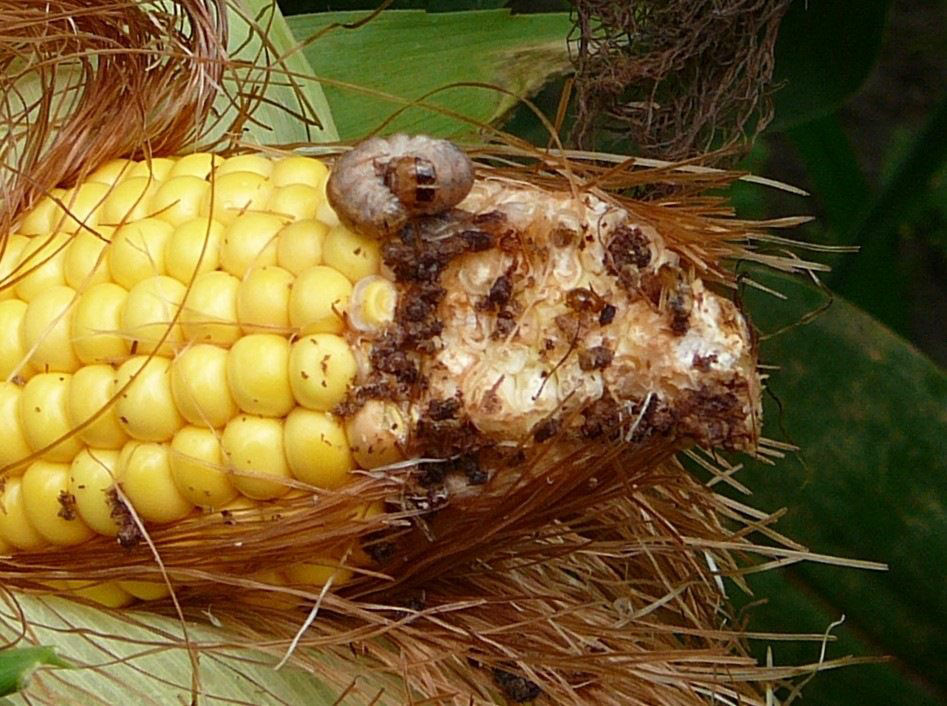
CLICK ON THE CUTWORM TAB TO LEARN MORE
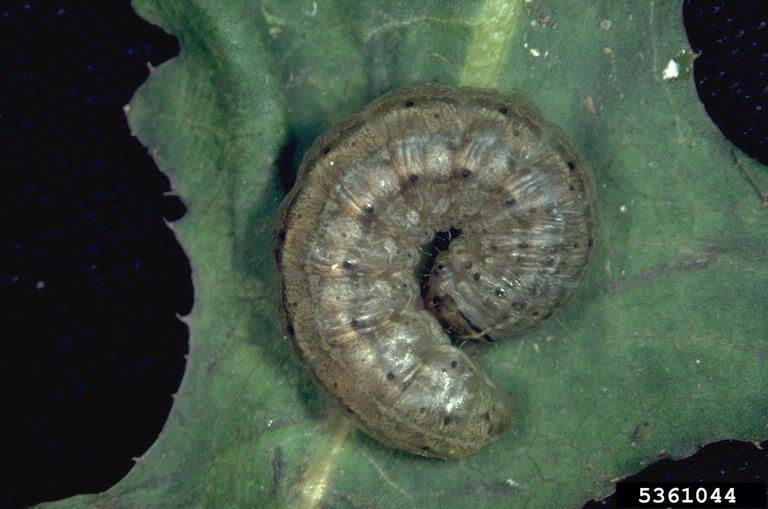
Description: Mottled pale greenish grey to brown larvae with a broad whitish dorsal stripe along back with light brown head and darker spots.
Range: Western North America, east to Michigan, more common in arid west and prairies.
Host Plants: Small grains, canola, mustard, flax, alfalfa, sweet clover, pea, cabbage, sugar beet, various weeds (notably stinkweed) and grasses.
Life Cycle: Overwinters as larvae. Adults over summer in mountain areas and migrate back in the fall to prairie regions. One generation per year.
High Threat Situations: Outbreaks are often preceded by an abnormally dry July and wet fall.
Pest Status: Major pest.
Type of Injury: Above-ground cutworm. Smaller larvae chew holes in leaves and notch leaf margins. Larger larvae consume entire plant.
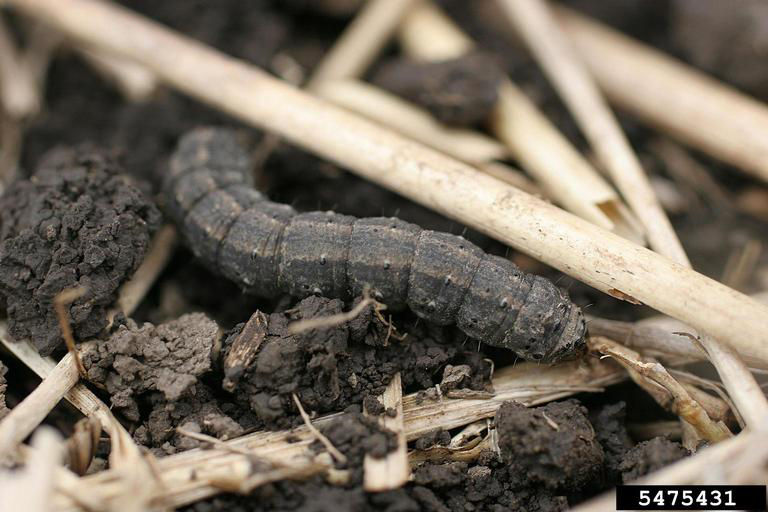
Description: Larvae are black-pale gray with a grainy feeling skin, with a dark brown head. There are pairs of dark tubercles (wart-like bumps) along the side of the body. The tubercles can distinguish black cutworms from other non-economic species. For black cutworm, the tubercle closest to the head on each body segment is approximately 1/3 the size of the tubercle closest to the rear.
Range: Major pest of corn in Midwest and eastern Canada. Typically found East of Rocky Mountains.
Host Plants: Many crops and weeds.
High Threat Situations: Weedy fields in the spring, particularly those with henbit and chickweed as they are attractive to female moths for egg laying.
Pest Status: Major pest.
Life Cyle: Does not overwinter in Midwest, as females migrate North from South Texas and Northern Mexico.
Type of Injury: Above-ground, cutting when plants are small, tunneling larger plants. Corn at growth stage V2 or V3 will be cut at ground level. Larger plants, tunneled below ground.
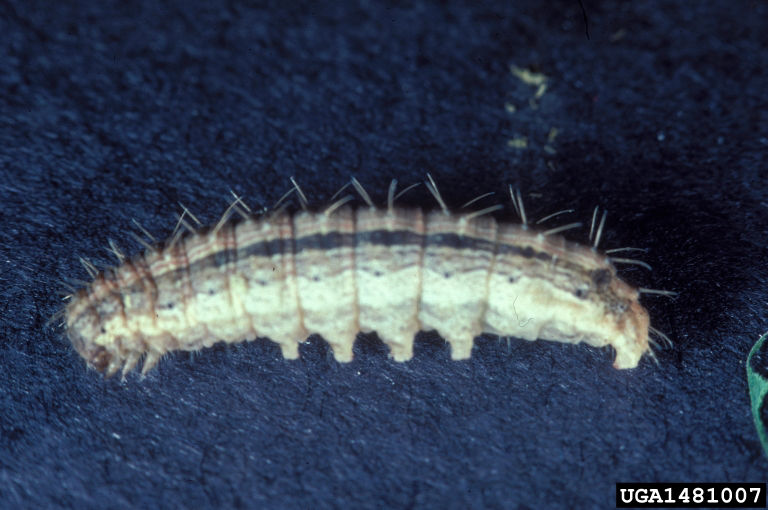
Description: Larvae may be green or brown, with a profusion of short hairs in each segment, faint diamond pattern on the skin with brown head that has black interlacing lines (sutures).
Range: Native to North America. Widely distributed from the southern USA and north as far as the Canadian Northwest Territories and east to Nova Scotia.
Host Plants: Alfalfa, clover, corn, tobacco, turnip, apple, grape, cottonwood, and many other species of broadleaf plants and grasses.
Pest Status: Minor pest.
Life Cyle: Overwinters in larval stage with 2 generations per year in northern part of range with multiple in southern part of range.
Type of Injury Above-ground climbing cutworm. The larvae feed near the soil surface.
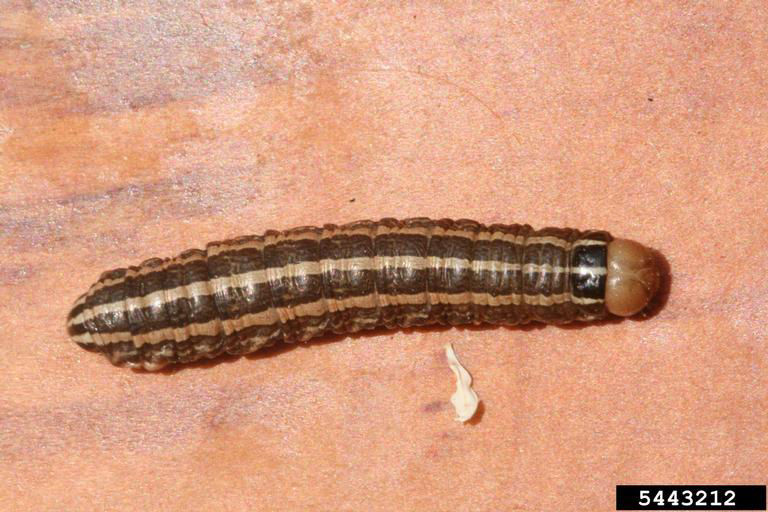
Description: Larvae are dark brown with a bronze sheen, three yellow stripes that run the length of the body. They are relatively thick-bodied as compared to other cutworm species.
Range: North America
Host Plants: Mainly grasses, corn and small grains.
High Threat Situations: Crops following sod.
Life Cycle:
Overwinter as larvae or occasionally eggs. One generation per year.
Pest Status: Minor pest.
Type of Injury: Above ground, can climb and will cut small plants.

Description: Larvae are pale-gray and translucent with a gray-brown head. There are bars on the front of the head and a broad yellow-brown stripe down the back.
Range: Middle and Eastern North America
Host Plants: Roots of a wide variety of wild and cultivated plants including apple trees, cabbage, clover, corn, and tobacco. Considered a minor pest.
High Threat Situations: Crops following sod.
Pest Status: Major pest.
Life Cycle: Overwinters as partially grown larva and can cause significant damage early in the spring.
Type of Injury: Cutting - often cuts plants at soil surface.
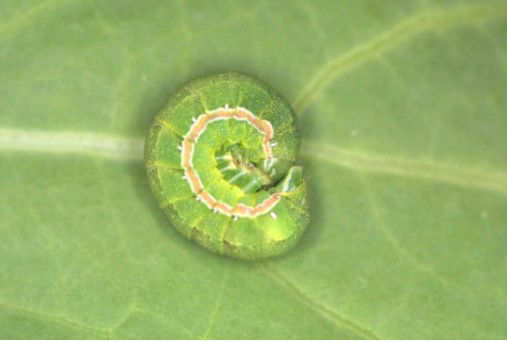
Description: Velvety-black body, sometimes green, with three, broken white lines along the length of the upper surface and a broad yellowish-pink stripe along each side with light brown head.
Range: Widely distributed in North America, except for southeastern US.
Host Plants: Canola, mustard, and flax are major field crop hosts. Other hosts include cruciferous weeds, sugar beet, clover, and some forages.
Pest Status: Occasional pest.
Life Cycle:: Overwinters as pupae in the soil. Two generations per year with the first, the most damaging.
Type of Injury: Above-ground climbing cutworm, small larvae feed on underside of leaves, larger larvae feed on all plant parts.
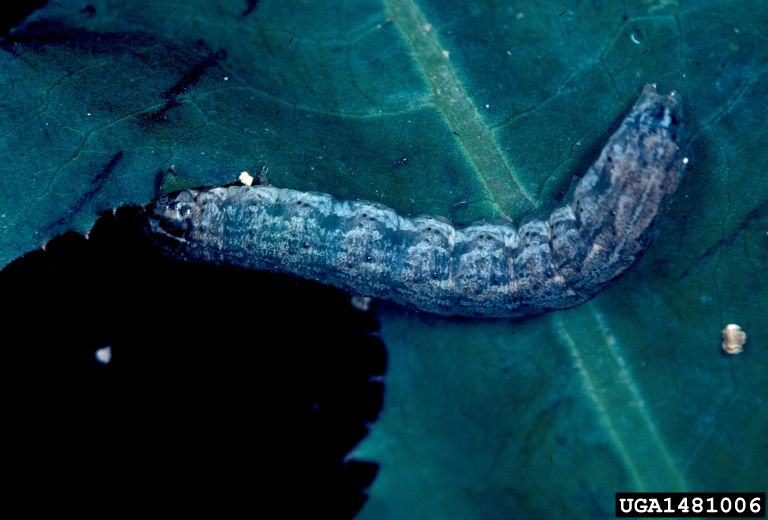
Description: Gray color and a white stripe along each side just above the legs, upper surface reddish with orange-brown head with dark spots.
Range: North America, north from the southern USA into southern Canada.
Host Plants: Many herbaceous and woody hosts including vegetables, cereals, canola, corn, tobacco, flax, sunflower.
High Threat Situations: Crops following weedy fields in the preceding growing season.
Pest Status: Frequent pest.
Life Cycle: One generation per year.
Type of Injury: Above-ground climbing cutworm, nighttime feeder on leaves and stems.
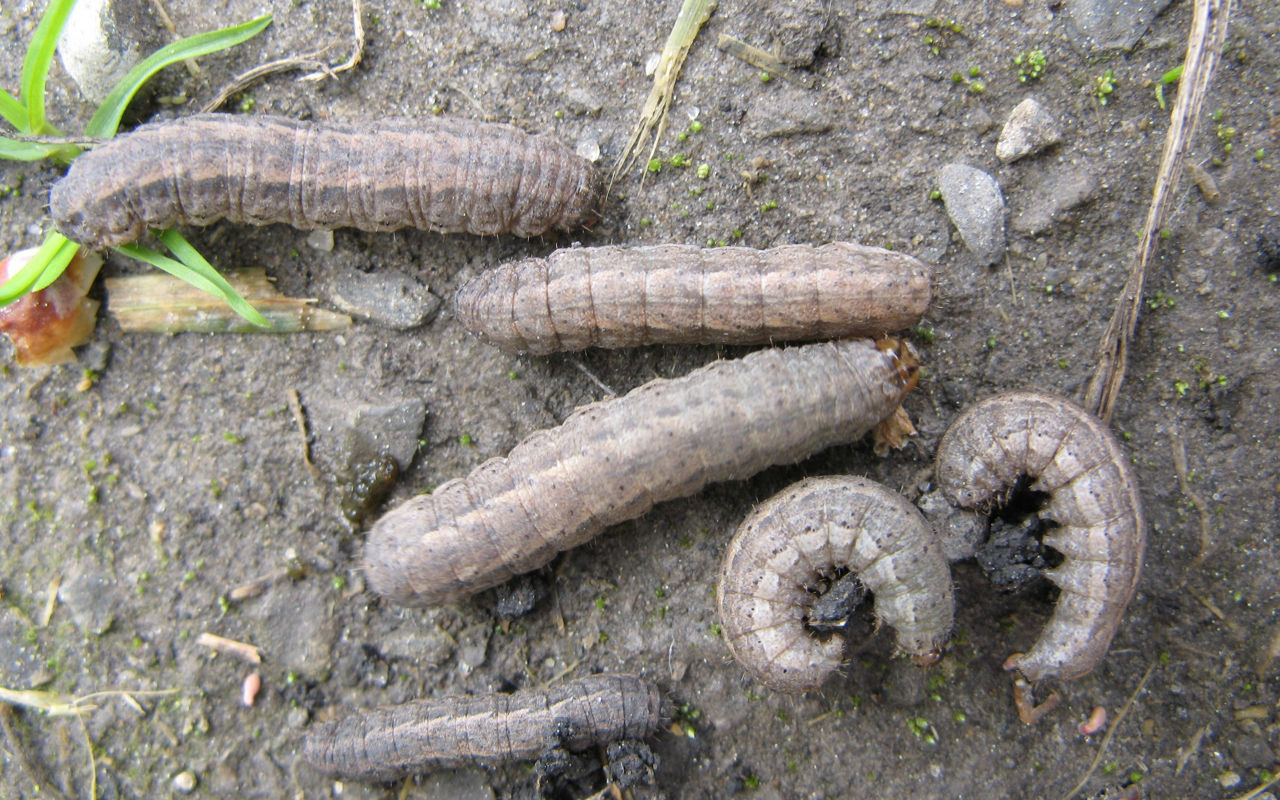
Description: Pale grayish brown, with broad gray stripe down the back with light gray V-shaped patterns and four black spots on each segment.
Range: North America distributed from Atlantic to Pacific coasts, north from the southern USA into southern Canada.
Host Plants: Wide host range, with sunflower, alfalfa, corn, flax, canola, small grains the major crop host as well as many weed species.
High Threat Situations: Weedy fields in the late summer and early fall will be more attractive to females.
Pest Status: Occasional pest, particularly in cool springs.
Life Cycle:: Overwinters small larvae, and feed in fall before overwintering
Type of Injury: Climbing above-ground cutworm, highest risk is early spring feeding as larvae overwinter and begin feeding when plants are relatively small.
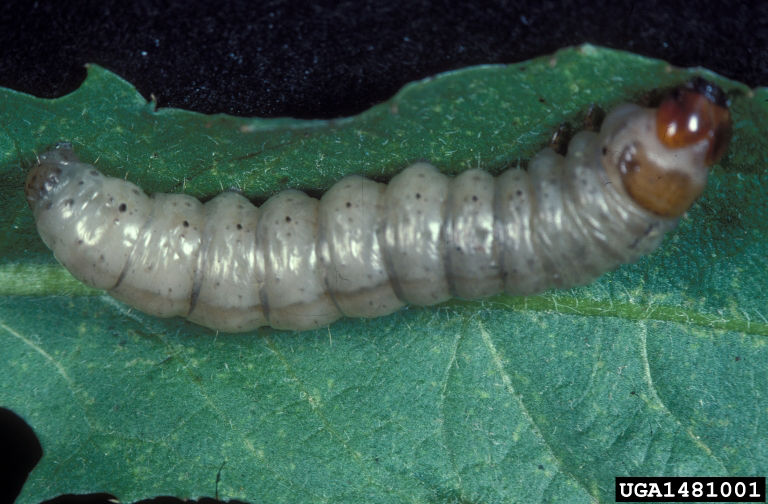
Description: Body semi-translucent giving it a glassy appearance, greenish-white or gray with bright reddish-brown head.
Range: North America
Host Plants: Grasses; including small grains and corn.
Life Cycle: Overwinters as small larvae.
High Threat Situations: Corn planted following wheat or sod may be at higher risk.
Pest Status: Occasional pest.
Type of Injury: Below-ground cutworm: Larvae feed underground on plant crowns and roots, rarely come to the surface.
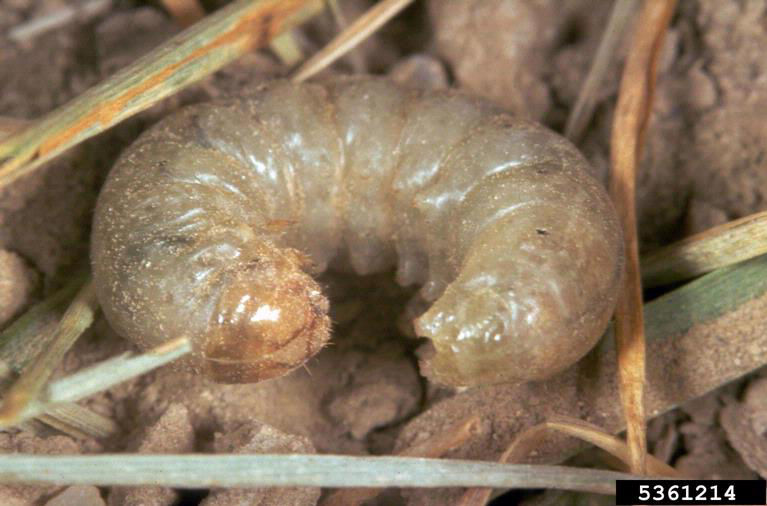
Description: Pale gray to greenish gray in color with yellow-brown head with two vertical black dashes.
Range: North America, but restricted to arid and semi-arid regions, most in Northern and Central plains in the US and southern prairies of Alberta and Saskatchewan in Canada.
Host Plants: Small grains preferred, others include canola, mustard, flax, corn, sugar beet, field peas, and certain weeds.
Life Cycle:: Overwinter as eggs, one generation per year.
High Threat Situations: Common annual pest, weedy fields in late summer are very attractive to females.
Pest Status: Frequent pest.
Type of Injury: Below-ground cutworm, however, young larvae feed on the surface resulting in small holes on small plants. Older larvae sever plants just below the soil surface.
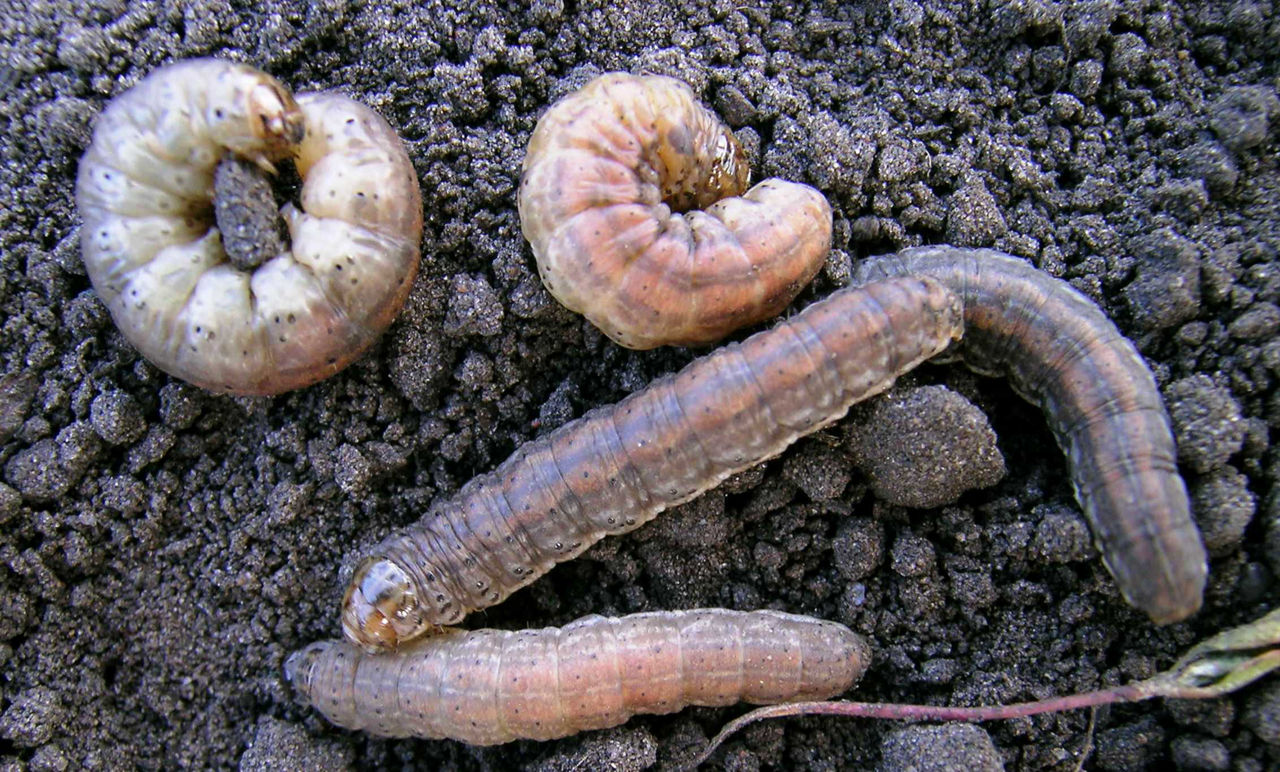
Description: Broad reddish-brown line down the back with a dark center line bordered by a dark band on each side.
Range: North America, in dry open habitats.
Host Plants: Wide host range including small grains, flax, canola, corn, mustard, sunflower, sugar beet, forage legumes, and vegetables.
Life Cycle: Overwinters as an egg, one generation per year
High Threat Situations: Fields that are weedy, broadleaf perennial and winter annual weeds, in late summer are attractive females.
Pest Status: Frequent pest.
Type of Injury: Above-ground cutworm: small larvae feed on the surface of leaves resulting in small holes, larger larvae cut off leaves and sever plants just below the soil surface.
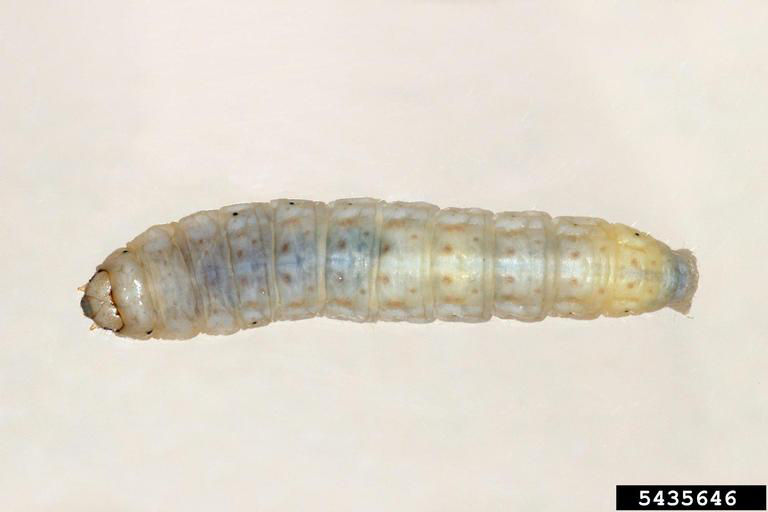
Description: Light-tan, semi-translucent, and has several pale, longitudinal stripes with a tan colored head.
Range: North America from Newfoundland to North Carolina, west to Nebraska, north to Alberta and the Northwest Territories.
Host Plants: The larvae feed on grasses including corn and small grains, various garden crops.
Life Cycle: Overwinter as a larva. There is one generation per year.
High Threat Situations: Can be very serious pest and found in sandy soils only.
Pest Status: Common pest, on sandy soils.
Type of Injury: Below-ground cutworm, feeds on roots and can cut young plants below the soil line.
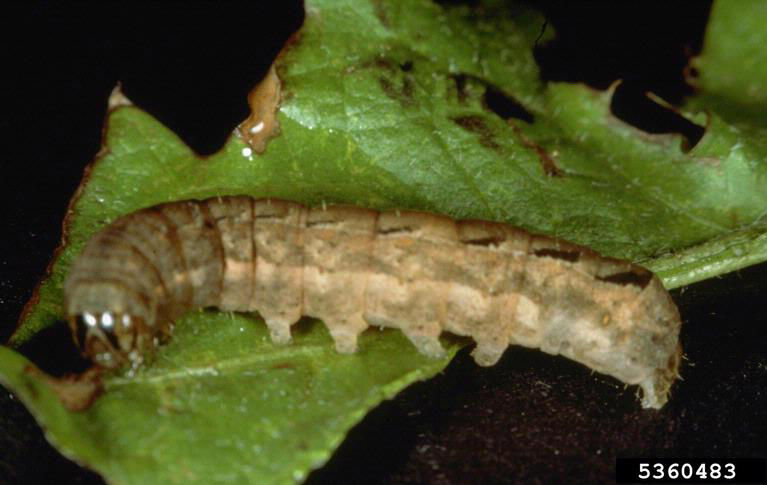
Description: Upper body mottled light to dark brown or gray with dark lateral chevrons, lower body is paler in color with a yellow or orange tint with bordered irregular wavy black line. Head white or pale brown.
Range: North America, except drier regions and southern US.
Host Plants: Broad host range, including alfalfa, clover, corn, small grains, pea, sunflower, tobacco, several vegetables, and many weed species.
Life Cycle: Overwinter as larvae; with two generations in Northern range and 3 in Southern range.
Pest Status: Occasional pest.
Type of Injury: Above-ground climbing cutworm, leaf feeder, but can cut seedlings.
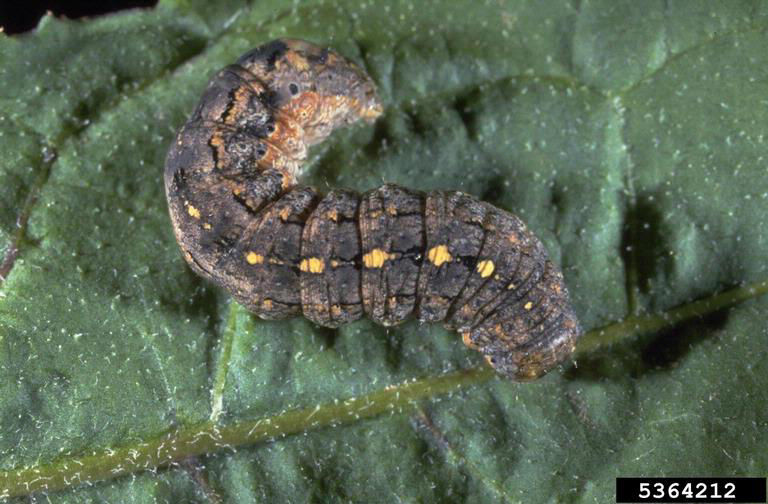
Description: Body pale gray or light brown mottled with dark brown, there are at least four yellow spots along their back with a large black followed by a large yellow spot on the last segment.
Range: Global, In North America, it occurs in Mexico, up to and across southern Canada.
Host Plants: Broad host range that includes corn, bean, alfalfa, small grains, sweet clover, potato, soybean, garden crops, but prefers broadleaf plants.
Life Cycle: Moths migrate or are wind-blown from southern states with two to three larval generations per year depending on weather.
Pest Status:: Frequent pest.
High Threat Situations: Weedy fields, with broadleaf weeds are attractive to females, early warm dry springs can also increase likelihood of outbreaks.
Type of Injury: Above-ground climbing cutworm, Larvae climb plants and feed on all plant parts.

Description: Body tan or pinkish in color, two distinct black bars behind the brown-colored head.
Range: Originally western plains and prairie provinces, and has expanded range East to Pennsylvania and Ontario.
Host Plants: Primarily a pest on corn, secondarily on dry beans, and some other legumes, but not soybean. Can survive on some weeds, such as red root pigweed and nightshade.
Life Cycle: Over winters as larva in the soil. One generation per year.
High Threat Situations: Serious Pest. Corn fields that are pre-tassel during female flights, as eggs laid on upper surface of upper most leaf.
Pest Status: Frequent pest.
Type of Injury: Above-ground climbing cutworm, young larvae feed on tassels; older larvae tunnel into the ear to feed on kernels.
Description: Uniform coloration ranging from dull grayish to nearly black with pale spots; traces of pale lines along back with pale brownish head with heavy black markings.
Range: North America, extending into southern Canada and south to Mexico.
Host Plants: Grasses including oat, corn, alfalfa, clover, tobacco, various weeds.
Life Cycle: One generation per year, in Midwest it overwinters as larvae in northern areas it may overwinter as eggs.
Pest Status: Minor pest.
Type of Injury: Above-ground cutworm, larvae emerge at night take tissue from host and consume in tunnels in the soil.
Description: Dull greenish-white and somewhat semi-transparent; sides, wrinkled appearance, with reddish head and black mandibles.
Range: North America, except SE USA and the Southern High Plains. Present across the Northern Plains, Midwest, Prairie Provinces and eastern Canada.
Host Plants: Broad host range that includes small grains, corn, pea, potato, and many vegetable crops.
Life Cycle: Overwinters as larva. One generation per year.
Pest Status: Minor pest.
Type of Injury: Below-ground cutworm, feeds on roots and can cut young plants below the soil line.
Source
Floate, K.D. 2017. Cutworm pests on the Canadian Prairies: Identification and management field guide. Agriculture and Agri-Food Canada, Lethbridge, Alberta. https://publications.gc.ca/
Ostlie, K and Potter, B. 2021. Black cutworm. University of Minnesota Extension. https://extension.umn.edu/corn-pest-management/black-cutworm#other-cutworm-species-in-minnesota-corn-1187410
1215_64137